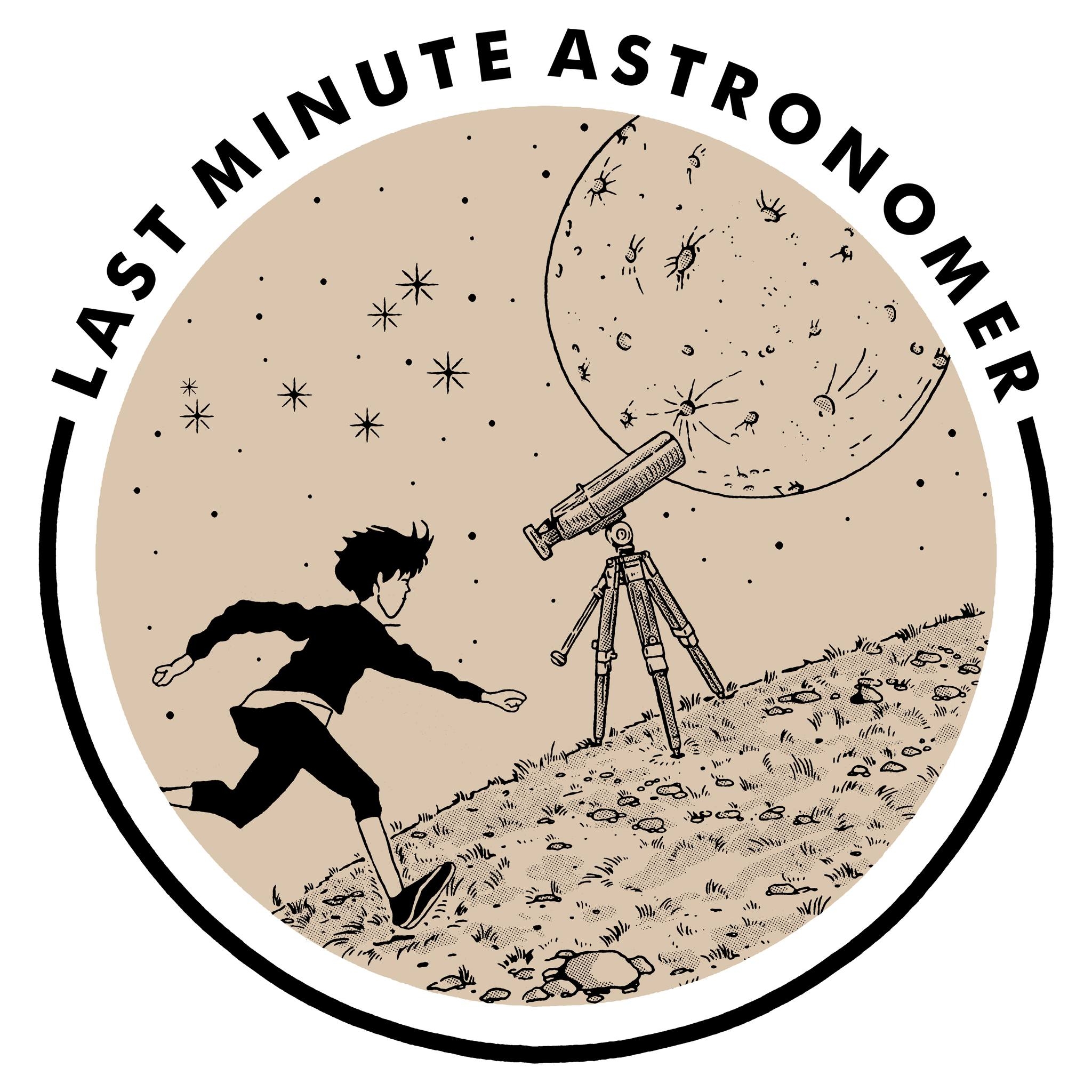Podcaster: Rob Webb

Title: Last Minute Astronomer January 2024
Organization: Physics teacher at Pequea Valley High School
Link: http://mrwebb.podbean.com ;
https://sites.google.com/site/mrwebbonline/ ;
http://www.youtube.com/user/MrWebbPV
https://sites.google.com/site/pvplanetarium/home
follow me : @MrWebbPV on Twitter ; @lastminuteastronomer on Facebook and Instagram
Don’t forget this podcast is found on my Podbean page, Stitcher, and iTunes. There’s also a video version on my YouTube Channel and I can be found on Twitter and Instagram as @mrwebbpv. The Pequea Valley Planetarium and its events and updates are on Facebook, Twitter, and Instagram as @pvplanetarium.
Use a sky map from www.skymaps.com to help you out.
Description:
January of 2024 has some slight changes to Saturn and Jupiter in the sky, 4 visible naked-eye planets, and a couple of close encounters.
Today’s sponsor: Big thanks to our Patreon supporters this month: Rob Leeson, David Bowes, Brett Duane, Benett Bolek, Mary Ann, Frank Frankovic, Michael Freedman, Kim Hay, Steven Emert, Frank Tippin, Rani Bush, Jako Danar, Joseph J. Biernat, Nik Whitehead, Michael W, Cherry Wood, Steve Nerlich, Steven Kluth, James K Wood, Katrina Ince, Phyllis Foster, Don Swartwout, Barbara Geier, Steven Jansen, Donald Immerwahr
Please consider sponsoring a day or two. Just click on the “Donate” button on the lower left side of this webpage, or contact us at signup@365daysofastronomy.org.
Or please visit our Patreon page: https://www.patreon.com/365DaysOfAstronomy
Transcript:
January of 2024 has some slight changes to Saturn and Jupiter in the sky, 4 visible naked-eye planets, and a couple of close encounters.
I’m Rob, your Last Minute Astronomer, bringing astronomy to normies and nerds, with little time to spare. As usual, we’ll start by talking about where the naked eye planets are this month, move on to the lunar phases, and finish up with a calendar of events, so you can plan ahead better than me.
Naked-eye PLANETS
Sunset
Saturn – Starts off January about 30˚ above the horizon in the SW, and sinks to about 15˚ by month’s end. Fairly dim, but still brighter than all the stars around it.
Jupiter – SUPER bright in the SSE, about halfway up the sky. Just find the brightest point of light in that direction, and you’ve got it.
Throughout the night
Saturn & Jupiter – With Saturn starting about 30˚ above the horizon in the SW and Jupiter in the SE, these two march westward through the night. Saturn sets in the West around 9:30pm at the beginning of the month and 7:30 at the end. Jupiter sets in the West around 2:30am at the beginning of the month, 12:30am at the end.
Morning
Venus – Venus again is on its slow, slinky, sinking way out. Getting lower and lower every morning, as it orbits behind the Sun, with Earth trailing it. Probably too low to see starting February, and not really visible in the evening until maybe July. But this month, between 4:30am and 5:30am, Venus will be above the horizon, rising to about 20˚ above the horizon by sunrise, in the beginning of the month, 10˚ at the end. Brilliant, brighter than everything around it.
Mercury – Barely visible the first 2 weeks of January. Get out between 6am and 7:30am, and look SE. Find super bright Venus, and then down and to the left, about halfway toward the horizon (15˚), is Mercury. You’ll need a very clear and low horizon.
EVENTS
Last Quarter Moon – 3rd (Visible midnight into the morning)
Morning Crescents (look East in the AM)
New Moon – 11th (darkest skies)
Evening Crescents (look West after Sunset)
First Quarter Moon – 17th (Visible until midnight)
Evening Gibbous (Mostly lit, after Sunset)
Full Moon – 25th (Visible all night)
Waning Gibbous (Mostly lit, rises later at night)
7th – 9th – CLOSE ENCOUNTER – Moon, Venus, Mercury – The main catch here is a very thin crescent Moon and bright Venus, but Mercury is also around, but very low and hard to see. Get out around 6am and find a very clear view of the SE. If you can see below Venus, you’re probably good. On the 7th, the Moon will be up and to the right of Venus about 16˚, with Mercury down and to the left of Venus about the same distance. The next morning, the 8th, the Moon will have moved to be about 7˚ down and to the right of Venus. Technically, you might be able to catch the Moon on the morning of the 9th, but it will be quite difficult without the clearest of horizons after 6:30am. The Moon, Mercury, and Venus will make a beautiful triangle.
13th – 14th – CLOSE ENCOUNTER – Moon, Saturn – Get out after sunset, look SW, and the Moon will be about 8˚ below Saturn. Then on the 14th, the Moon will be roughly on the opposite side of Saturn.
18th – CLOSE ENCOUNTER – Moon, Jupiter – The Moon is only about 3˚ above bright Jupiter
And that’s the sky for _______ of ____. If you find this advance notice of the night sky helpful, please support this work by finding Last Minute Astronomer on Patreon, and don’t forget to follow Last Minute Astronomer on Facebook and Instagram. Till next month, I’m the Last Minute Astronomer wishing you fruitful plans and clear skies. Music was produced by Deep Sky Dude and used with permission.
End of podcast:
365 Days of Astronomy
=====================
The 365 Days of Astronomy Podcast is produced by Planetary Science Institute. Audio post-production by Richard Drumm. Bandwidth donated by libsyn.com and wizzard media. You may reproduce and distribute this audio for non-commercial purposes.
This show is made possible thanks to the generous donations of people like you! Please consider supporting to our show on Patreon.com/365DaysofAstronomy and get access to bonus content.
After 10 years, the 365 Days of Astronomy podcast is poised to enter its second decade of sharing important milestone in space

